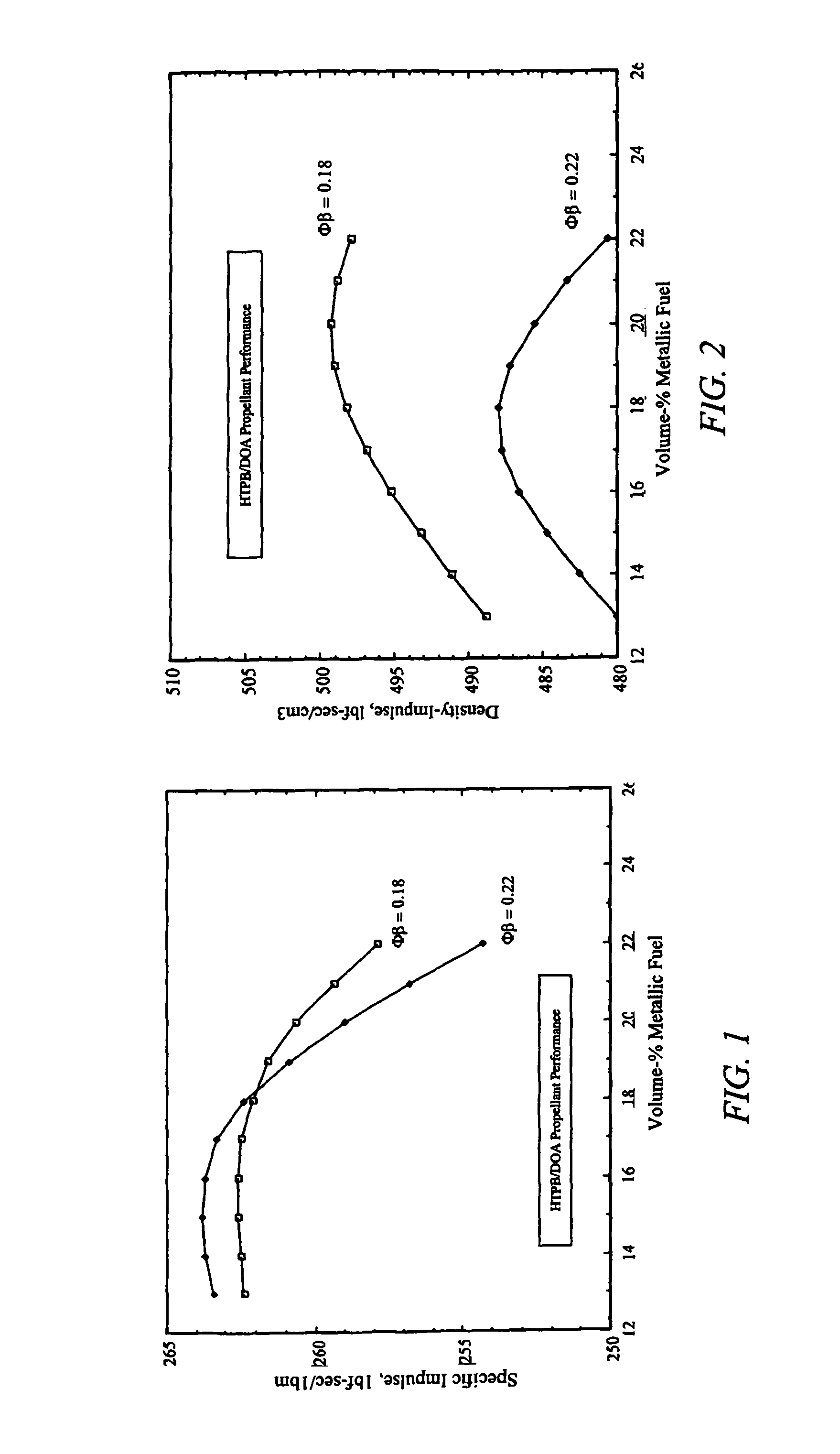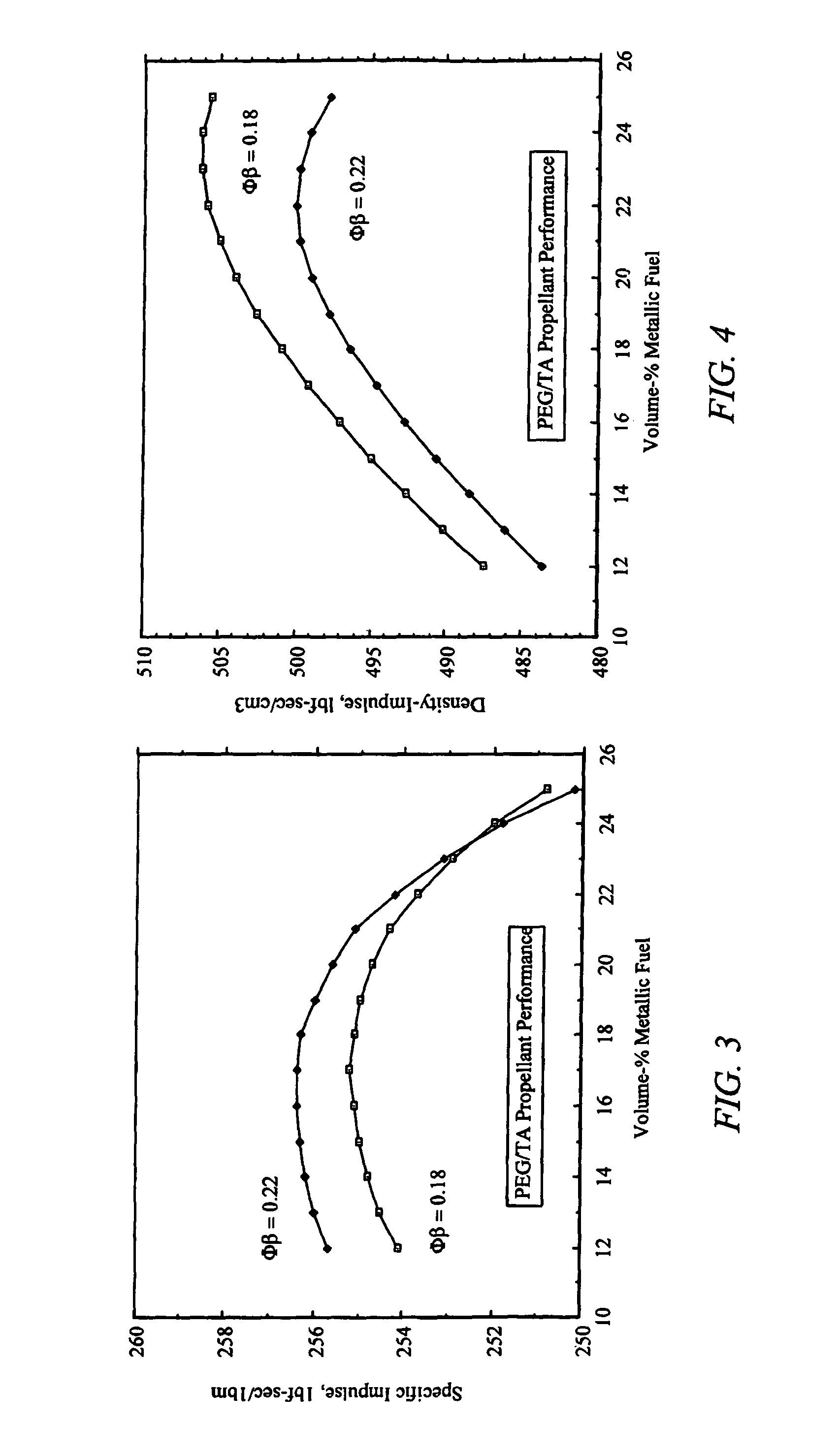High burning rate tactical solid rocket propellant, and related method
a rocket propellant and high burning rate technology, applied in the direction of nitrated explosive compositions, non-explosive fillers/gelling/thickening agents, explosives, etc., can solve the problem of slow burning explosives, increase hazards, and limit combustion to about 12 mm/sec, so as to increase the ability to solubilize energetic additives
- Summary
- Abstract
- Description
- Claims
- Application Information
AI Technical Summary
Benefits of technology
Problems solved by technology
Method used
Image
Examples
Embodiment Construction
[0024]The composition includes an elastomeric polymeric binder compounded with a soluble energetic additive, a metallic fuel, and an oxidative fuel, where the composition has a tactical Class 1.3 hazard rating, and a linear regression rate that is conventionally only obtainable using solid rocket propellants having a tactical Class 1.1 hazard rating. The binder is selected from the group including polar polymers: polyesters (such as, HTPCL, hydroxyl terminated polycaprolactones and polycaprolactone-containing copolymers (such as, CAPA)), and HTPE (hydroxyl terminated polyethers (such as PEG (polyethylene glycol), (PPG) polypropylene glycol, (PTMG) polytetramethylene glycol, (PIBG) polyisobutylene glycol, and (PBG) polybutylene glycol, polymeric combinations of glycols, and blends thereof)). The binders are generally admixed with a plasticizer like TA (triacetin), DOP (dioctyl phthalate), DOA (dioctyladipate), DOM (dioctylmaleate), DBP (dibutylphthalate), and adiponitrile. The binder...
PUM
 Login to View More
Login to View More Abstract
Description
Claims
Application Information
 Login to View More
Login to View More - R&D
- Intellectual Property
- Life Sciences
- Materials
- Tech Scout
- Unparalleled Data Quality
- Higher Quality Content
- 60% Fewer Hallucinations
Browse by: Latest US Patents, China's latest patents, Technical Efficacy Thesaurus, Application Domain, Technology Topic, Popular Technical Reports.
© 2025 PatSnap. All rights reserved.Legal|Privacy policy|Modern Slavery Act Transparency Statement|Sitemap|About US| Contact US: help@patsnap.com



